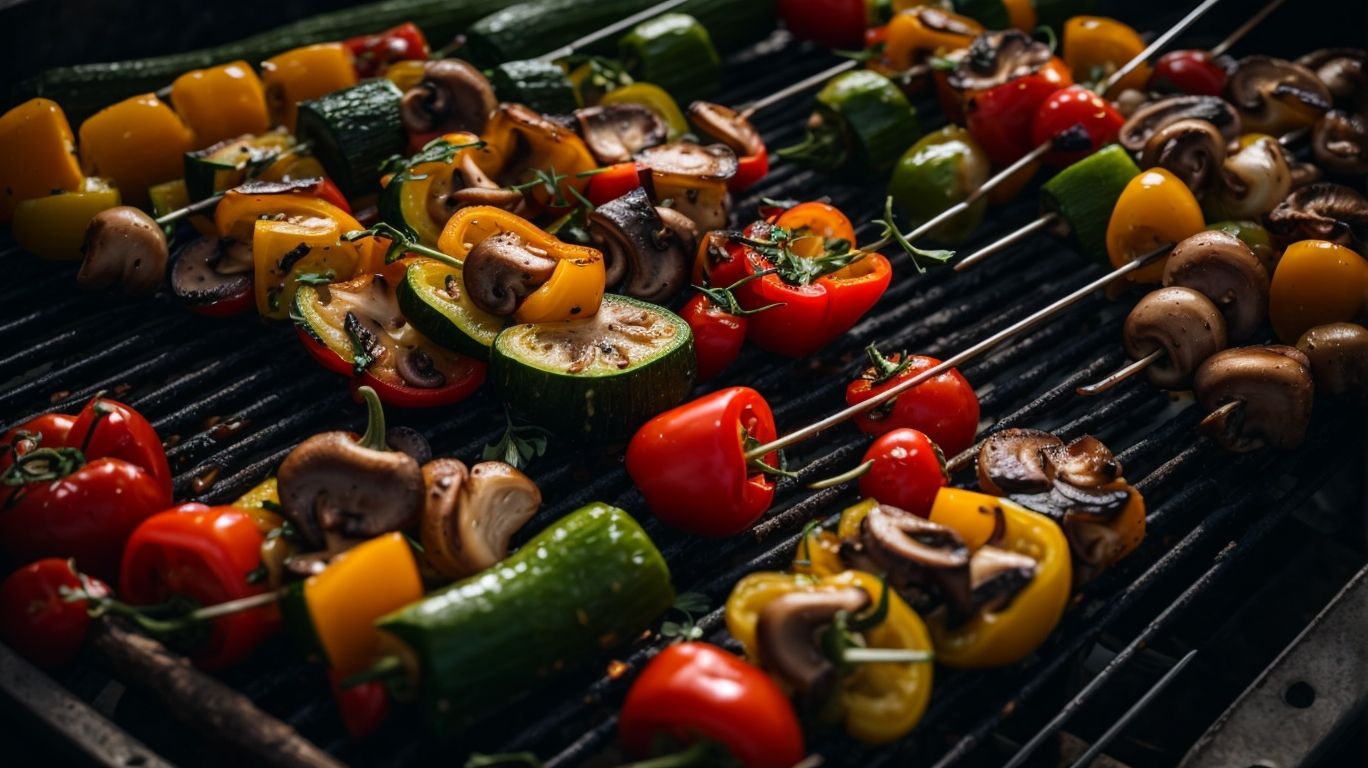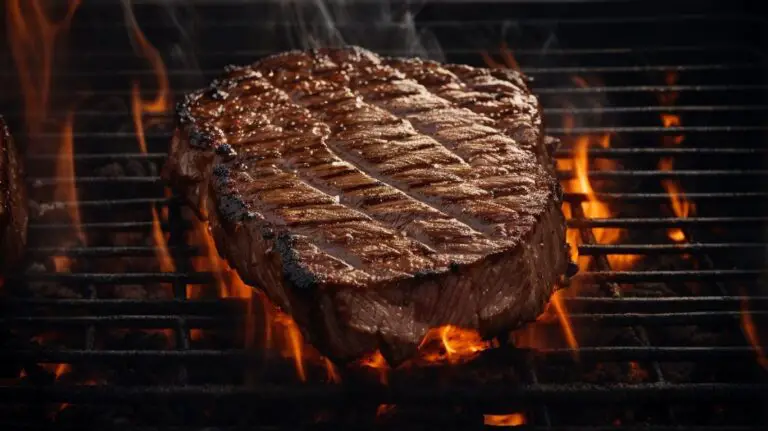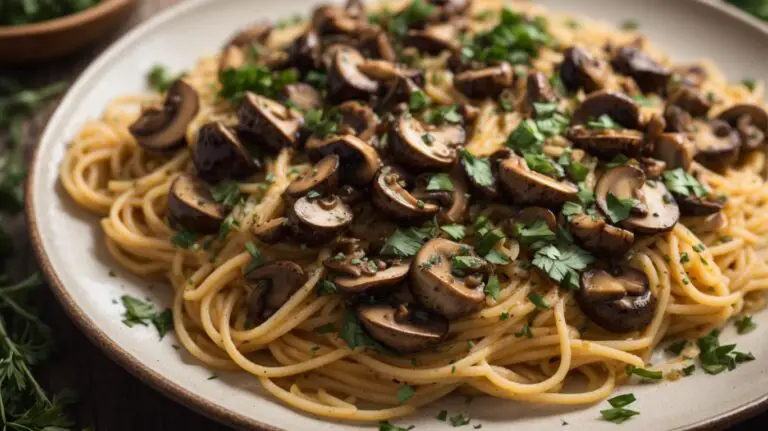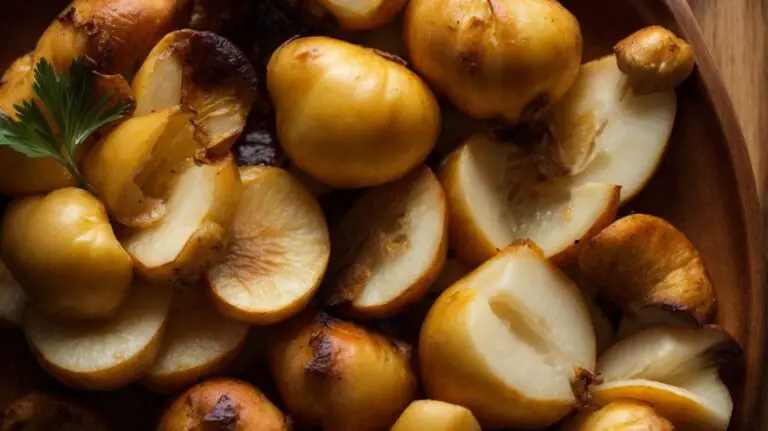How to Cook Vegetable Kabobs on the Grill?
Welcome to the world of flavorful and healthy eating with Chris Poormet and Poormet.com!
Explore the delicious realm of vegetable kabobs. From choosing vegetables to preparing and grilling them to perfection, we cover it all. Discover the best marinade and seasoning options, explore different variations, and uncover the secrets of serving and enjoying vegetable kabobs. Get ready to elevate your grilling game and impress your taste buds with these mouthwatering creations!
Key Takeaways:
About Chris Poormet and Poormet.com
Chris Poormet, the award-winning Culinary Blogger of the Year and former chef known for his exceptional food photography, is the creative mind behind Poormet.com, a popular platform for sharing recipes and culinary tips.
Drawing from his rich background in the culinary arts, Chris Poormet seamlessly blends his expertise as a chef with his passion for photography, creating visually stunning images that elevate the art of food presentation to new heights. Through Poormet.com, he not only shares delicious recipes but also provides invaluable insights into various cooking techniques and the art of plating. His meticulous attention to detail and dedication to the craft have garnered him a loyal following among food enthusiasts and aspiring chefs alike.
What Are Vegetable Kabobs?
Vegetable kabobs, also known as veggie skewers, are a delightful dish featuring an assortment of grilled vegetables skewered together, often paired with flavorful sauces or marinades.
These kabobs have gained popularity not only for their vibrant colors and flavors but also for their versatility in accommodating different dietary preferences, including vegetarian and vegan diets. The beauty of vegetable kabobs lies in the endless combinations one can create by mixing and matching various vegetables such as bell peppers, zucchini, cherry tomatoes, mushrooms, and onions.
To enhance the taste profile, some chefs may choose to brush the vegetables with a savory marinade before grilling, while others prefer a light drizzle of olive oil and sprinkling of herbs for a more natural flavor. The grilling process imparts a smoky aroma and charred marks on the veggies, adding depth to the overall presentation.
What Vegetables Can Be Used for Kabobs?
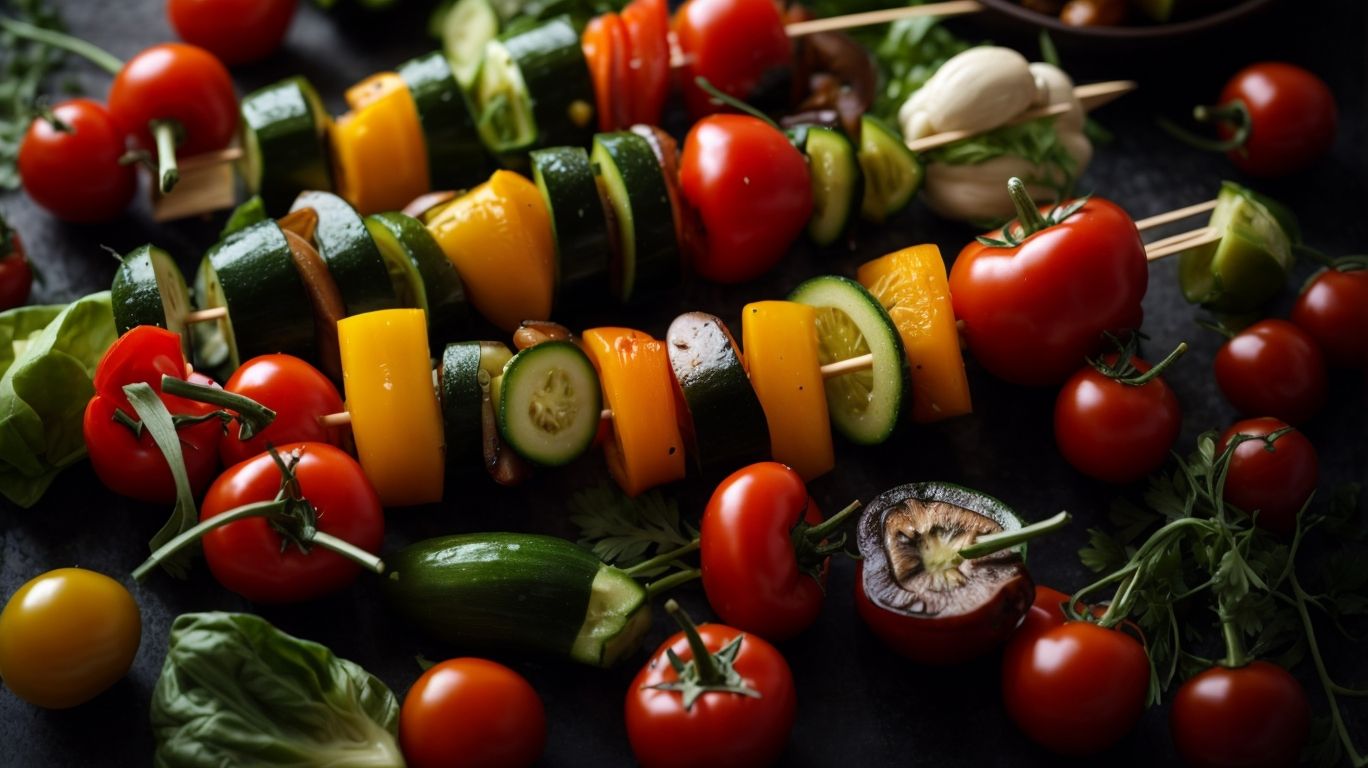
Credits: Poormet.Com – Austin Nguyen
Vegetable kabobs offer a spectrum of options for vegetable selection, including vibrant bell peppers, succulent zucchini, aromatic onions, earthy mushrooms, juicy tomatoes, versatile eggplants, tender broccolini, and flavorful Brussels sprouts.
Adding cherry tomatoes bring a burst of sweetness, while yellow squash adds a sunny hue. Peppery radishes can provide a spicy kick, and buttery corn kernels offer a hint of sweetness. Crisp red onions add a sharp flavor, and hearty potatoes contribute a satisfying texture. For a colorful display, mix and match these vegetables on skewers.
- Cooking Tip: Marinade the vegetables in a blend of olive oil, herbs, and spices for at least 30 minutes before grilling to enhance their flavors.
- Pairing Suggestions: Serve the vegetable kabobs with a side of creamy tzatziki sauce or a tangy balsamic glaze for added depth of taste.
- Nutritional Benefits: These vegetable kabobs are packed with essential vitamins, minerals, and antioxidants, making them a healthy and flavorful addition to any meal.
What Other Ingredients Can Be Added to Vegetable Kabobs?
Along with vegetables, vegetable kabobs can be enhanced with ingredients like tangy balsamic vinegar, aromatic garlic, zesty chimichurri sauce, smoky BBQ sauce, refreshing watermelon limeade, and delightful mango, paired with sides such as cilantro lime rice, chicken ranch pasta salad, bruschetta, and grilled lettuce salad.
Tangy balsamic vinegar adds a sweet and acidic kick to the kabobs, while aromatic garlic infuses a rich depth of flavor. Zesty chimichurri sauce brings a burst of freshness, and smoky BBQ sauce introduces a savory element. For a refreshing twist, serve the kabobs with watermelon limeade, and add a tropical touch with delightful mango on the skewers.
To complement these flavors, consider serving the kabobs with fragrant cilantro lime rice, a creamy chicken ranch pasta salad, vibrant bruschetta, and a unique grilled lettuce salad for a well-rounded meal that tantalizes the taste buds.
What Are Some Marinade Options for Vegetable Kabobs?
Marinades play a crucial role in enhancing the flavor of vegetable kabobs, with options ranging from garlic-infused blends and tangy vinegar-based marinades to savory teriyaki sauces and custom seasoning mixes, resulting in perfectly grilled vegetables bursting with flavor.
Garlic-infused marinades, with the aromatic garlic notes delicately infusing the vegetables, are a popular choice for those seeking a robust, savory flavor profile. On the other hand, tangy vinegar-based marinades provide a refreshing zing that cuts through the natural sweetness of vegetables, offering a vibrant contrast of flavors.
For a taste of the Orient, teriyaki sauces deliver a harmonious blend of sweet and salty notes, caramelizing beautifully on the grill to create a sticky glaze on the vegetables. Custom seasoning mixes, tailored to individual preferences, allow for endless creative possibilities, from smoky paprika-infused blends to spicy cajun-inspired rubs.
What Are Some Seasoning Options for Vegetable Kabobs?
Seasoning options for vegetable kabobs are diverse, ranging from Mediterranean-inspired blends and BBQ rubs to custom seasonings tailored for grilled meals or oven-roasted dishes, enhancing the taste and aroma of the vegetables for a delightful culinary experience.
When preparing vegetable kabobs, consider incorporating regional influences to add an authentic touch to your dish. Mediterranean seasonings like oregano, thyme, and lemon zest can bring a fresh, herbaceous flavor profile to your kabobs, while BBQ rubs with a smoky undertone can add depth and richness.
Experimenting with spice blends from different cuisines can introduce an exciting fusion of flavors.
For a harmonious blend of tastes, try pairing sweet vegetables like bell peppers or sweet potatoes with savory seasonings such as garlic, paprika, and cumin. The contrasting flavors can create a dynamic and satisfying balance on your kabobs. Don’t shy away from bold and creative seasoning ideas, like a curry-infused marinade or a tangy balsamic glaze, to elevate the taste experience.
How to Prepare Vegetables for Kabobs?
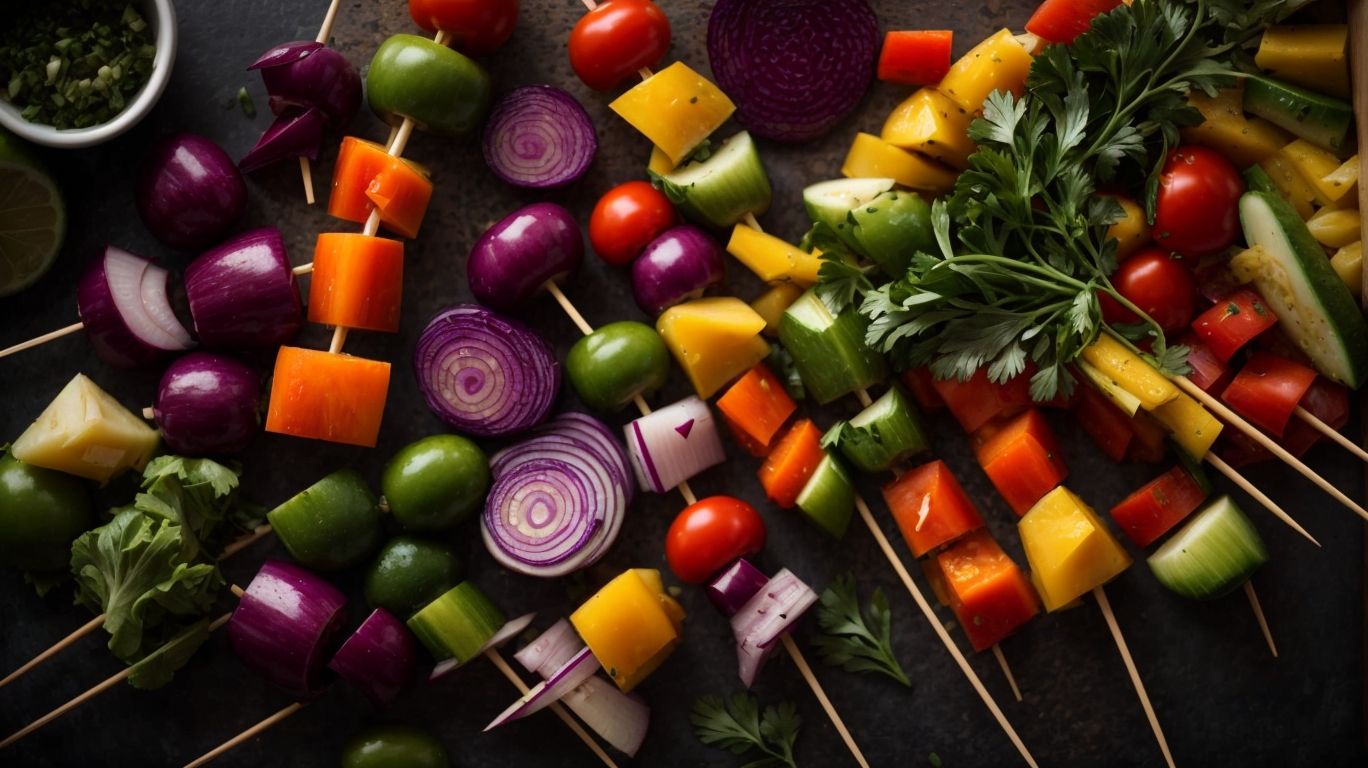
Credits: Poormet.Com – Kyle Green
Properly preparing vegetables for kabobs involves washing, cutting, marinating, and skewering the vegetables to ensure even cooking and optimal flavor infusion throughout the grilling process.
When selecting vegetables for kabobs, opt for a variety of colorful veggies like bell peppers, zucchini, mushrooms, cherry tomatoes, and onions to enhance not only the taste but also the visual appeal of your kabobs. Ensure to wash the vegetables thoroughly to remove any dirt or residue. Cutting the vegetables into uniform pieces is crucial to ensure that they cook evenly on the grill.
When marinating, use a flavorful marinade made from olive oil, herbs, spices, and citrus juices. Allow the vegetables to marinate for at least 30 minutes to absorb the flavors fully. Skewering the vegetables in a systematic manner onto the skewers will not only make them easier to grill but also add a beautiful presentation to your kabobs.
Should Vegetables Be Precooked Before Grilling?
While precooking vegetables before grilling is not necessary, it can help reduce overall grilling time and ensure that denser vegetables cook evenly with more delicate ones, providing a uniform texture and flavor profile in the finished kabobs.
One of the main drawbacks of precooking is that it can lead to some vegetables becoming mushy or losing their natural crunch when grilled. The flavors of some vegetables may also diminish if they are precooked.
To avoid this, an alternative technique is to marinate the vegetables in a flavorful mixture for some time before grilling. This not only enhances the taste but also helps in tenderizing the vegetables, reducing the risk of overcooking.
How to Assemble Vegetable Kabobs?
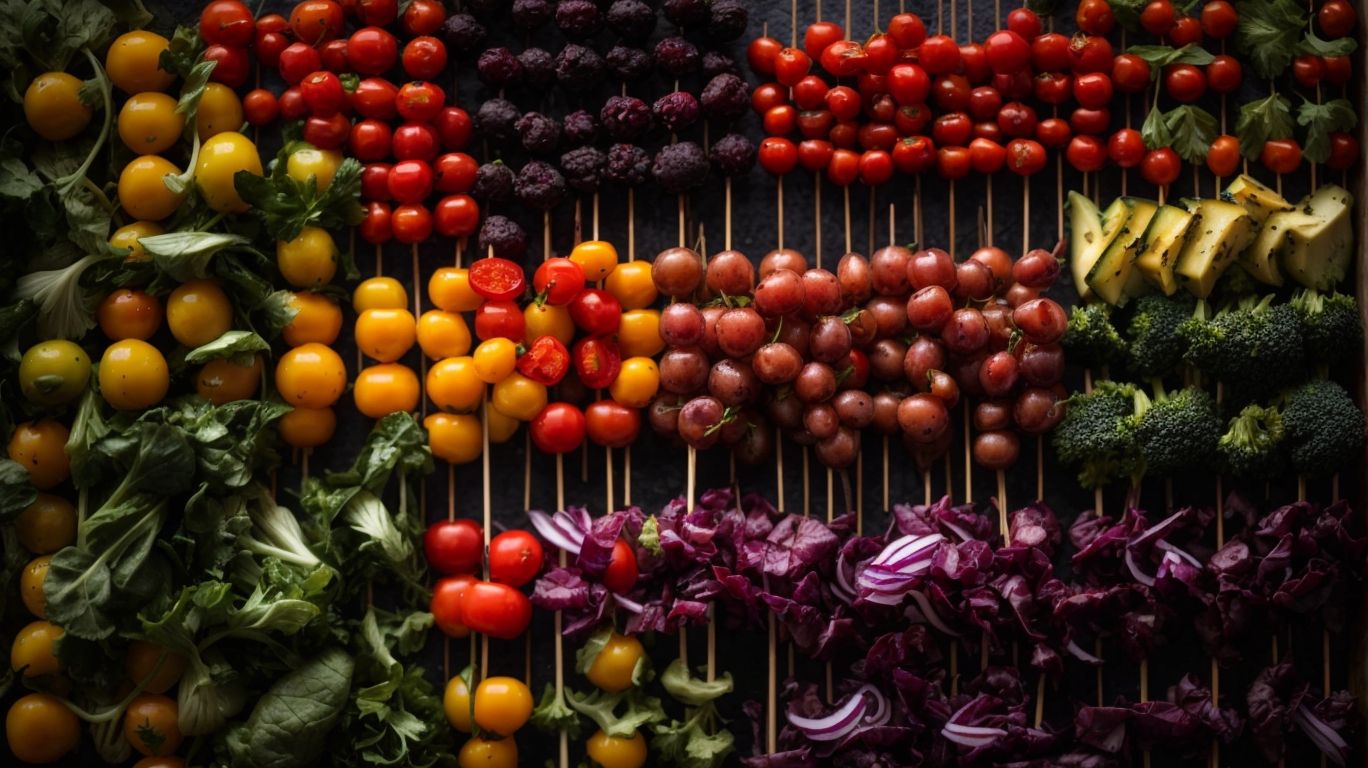
Credits: Poormet.Com – Austin Lopez
Assembling vegetable kabobs involves threading marinated vegetables onto skewers, layering them strategically for even cooking and appealing presentation, ready to be grilled to perfection over an open flame or on a grill pan.
Regarding skewer selection, opt for sturdy metal skewers or presoaked wooden skewers to prevent burning during the grilling process. Spacing out the vegetables evenly is key; this ensures that they cook uniformly and allows for nice charring marks, enhancing the overall flavor. Consider alternating colors and textures for a visually appealing arrangement; mix and match bell peppers, cherry tomatoes, mushrooms, zucchinis, and onions to create a vibrant color palette.
Experiment with different vegetable combinations to cater to different preferences and dietary requirements. Layering cherry tomatoes next to chunks of bell peppers not only adds visual interest but also ensures a burst of flavor in every bite.
What Is the Best Way to Grill Vegetable Kabobs?
Grilling vegetable kabobs is best achieved over a gas grill or open flame, allowing the vegetables to caramelize and develop smoky flavors, while the oven can be used as an alternative method for indoor grilling, ensuring a delicious grilled meal experience.
When grilling vegetable kabobs, one must pay attention to temperature control to ensure that the vegetables cook evenly without burning. Preheating the gas grill or oven to the optimal temperature is crucial. Gas grills offer the advantage of easy heat adjustment, allowing you to sear the veggies quickly or slow-cook them for that perfect tenderness. On the other hand, ovens provide a more controlled environment for indoor grilling, letting you monitor the cooking process closely.
Careful seasoning is key to enhancing the natural flavors of the vegetables. Whether using a rub, marinade, or a simple mix of spices, it’s important to coat the veggies thoroughly before grilling.
What Type of Grill Should Be Used?
Choosing the right grill, such as a gas grill for outdoor cooking or an oven for indoor grilling, plays a pivotal role in ensuring that vegetable kabobs are cooked to perfection, whether you prefer a smoky charred flavor or a roasted Mediterranean-inspired touch.
Gas grills are fantastic for outdoor grilling due to their convenience and quick heating capabilities. They offer precise temperature control, making it easier to achieve that perfect sear on your vegetables without any hot spots.
On the other hand, ovens are ideal for indoor cooking, providing a consistent heat distribution for evenly cooked kabobs. When preparing these flavorful skewers, consider pairing them with some deliciously baked potatoes, adding a hearty element to your Mediterranean-inspired meal.
What Temperature Should the Grill Be Set To?
Setting the grill to the right temperature, typically around medium-high heat for vegetable kabobs, ensures that the vegetables cook evenly, develop caramelization, and retain their natural flavors, resulting in deliciously grilled skewers that are perfectly charred on the outside and tender on the inside.
Grilling vegetables requires a delicate balance of heat application to achieve that sought-after combination of crispy char and tender bite. Too high a temperature can easily burn the veggies on the outside while leaving them raw inside. Conversely, grilling on too low heat might lead to a mushy texture with minimal color development.
To avoid this, start by preheating the grill thoroughly to medium-high. This initial burst of heat sears the outside of the vegetables, locking in moisture and flavor before the insides soften and caramelize. Skewer the vegetables with adequate spacing to allow for even cooking, rotating them periodically to ensure all sides are evenly charred.
How Long Should Vegetable Kabobs Be Grilled?
Grilling vegetable kabobs to perfection requires cooking them over moderate heat for approximately 10-15 minutes, ensuring that the vegetables are tender, slightly charred, and infused with smoky flavors, ready to be enjoyed as a delectable grilled dish.
When grilling vegetable kabobs, the optimal cooking time is crucial to achieve that perfect balance of texture and flavor. It’s essential to monitor the grilling process closely to avoid overcooking or undercooking the vegetables. Typically, you should grill vegetable kabobs for about 10-15 minutes, turning them every 3-5 minutes for even cooking.
During grilling, observe the vegetables for visual cues such as grill marks and caramelization, indicating that they are developing that desirable smoky taste. The vegetables should be tender but still have a slight crunch, providing a delightful contrast in each bite.
Remember, creating flavorful vegetable kabobs involves patience and attention to detail. By following these grilling duration guidelines and turning intervals, you can ensure that your vegetable kabobs are grilled to perfection every time.
How to Serve and Enjoy Vegetable Kabobs?
Serving and enjoying vegetable kabobs is a delightful experience, whether as a standalone dish accompanied by dipping sauces or as part of a larger meal spread, with leftovers offering the opportunity to create new culinary creations or enjoy a quick and flavorful snack.
When serving vegetable kabobs, consider presenting them on a platter garnished with fresh herbs and citrus wedges to add a vibrant touch to the overall look. Grilling vegetables enhances their natural flavors, but pairing them with the right sauces can elevate the taste further. Some popular choices include tzatziki, chimichurri, or a tangy peanut sauce for that added kick.
Leftover vegetable kabobs can be used in versatile ways; chop them up and toss them in a salad, stir them into a pasta dish, or use them as a filling for sandwiches or wraps. To preserve the flavors, store the leftover kabobs in an airtight container in the refrigerator.
For a more elaborate dining experience, consider serving vegetable kabobs with a side of garlic butter rice, grilled naan bread, and a refreshing cucumber tomato salad. You can also offer guests a selection of accompaniments such as hummus, pita bread, and pickled vegetables to create a Mediterranean-inspired feast.
What Are Some Variations of Vegetable Kabobs?
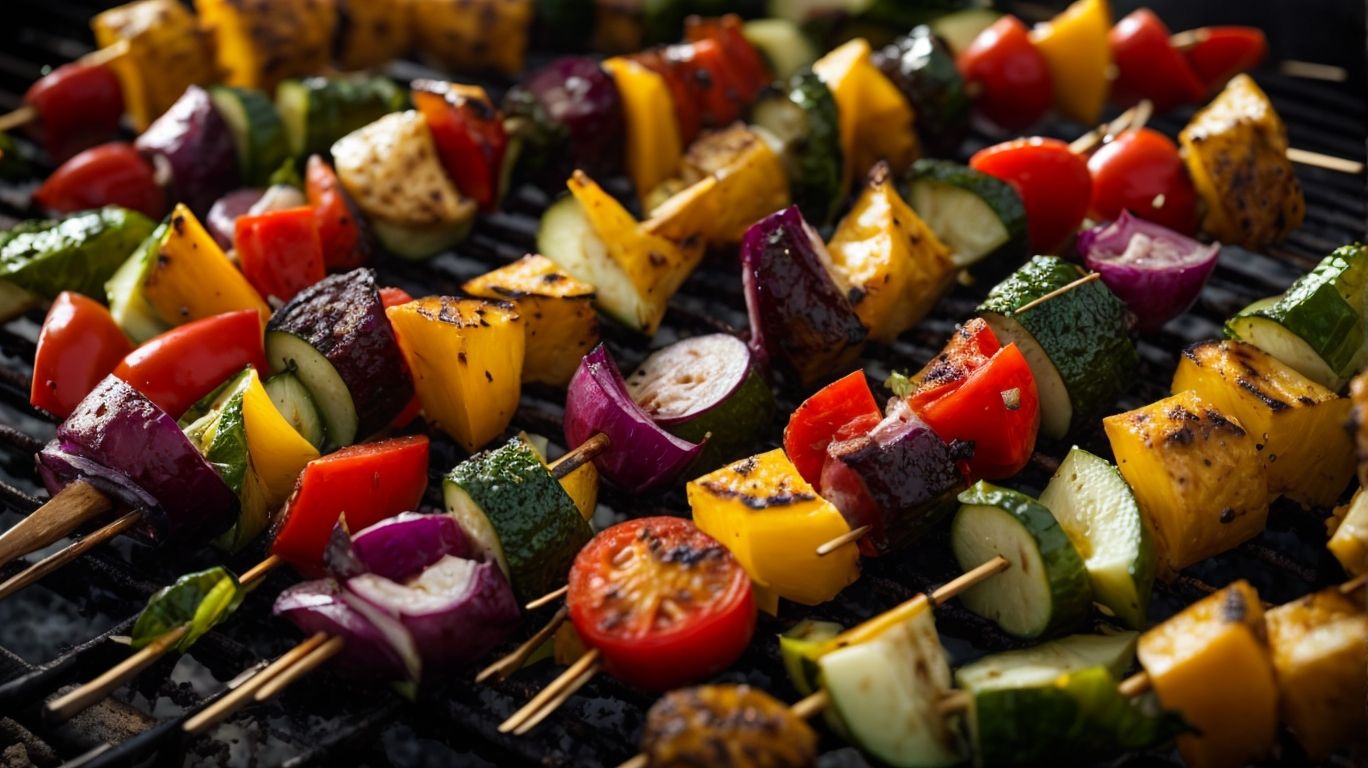
Credits: Poormet.Com – Jerry Wright
Exploring variations of vegetable kabobs opens up a world of culinary possibilities, from incorporating grilled corn, succulent shrimp, or marinated tofu to embracing Mediterranean-inspired flavors and innovative ingredient combinations for a diverse and satisfying meal experience.
Layering skewers with vibrant bell peppers, zesty cherry tomatoes, and aromatic herbs can elevate the visual appeal and nutritional value of your kabobs. Experimenting with different marinades, such as a zesty lemon-oregano dressing or a spicy harissa blend, can infuse your kabobs with rich, complex flavors that tantalize the taste buds.
Consider adding a tropical twist to your kabobs by including chunks of pineapple or mango for a sweet and tangy contrast. For a hearty option, mix in chunks of grilled portobello mushrooms or hearty root vegetables like sweet potatoes or parsnips to create a satisfying dish that caters to various dietary preferences.
Whether you’re grilling kabobs over an open flame, baking them in the oven, or sizzling them on a stovetop grill, each cooking technique imparts a unique charred flavor and tenderness to the ingredients. Don’t be afraid to think outside the box and customize your kabobs with unexpected ingredients like artichoke hearts, olives, or even halloumi cheese for a gourmet touch.
Conclusion and Final Thoughts
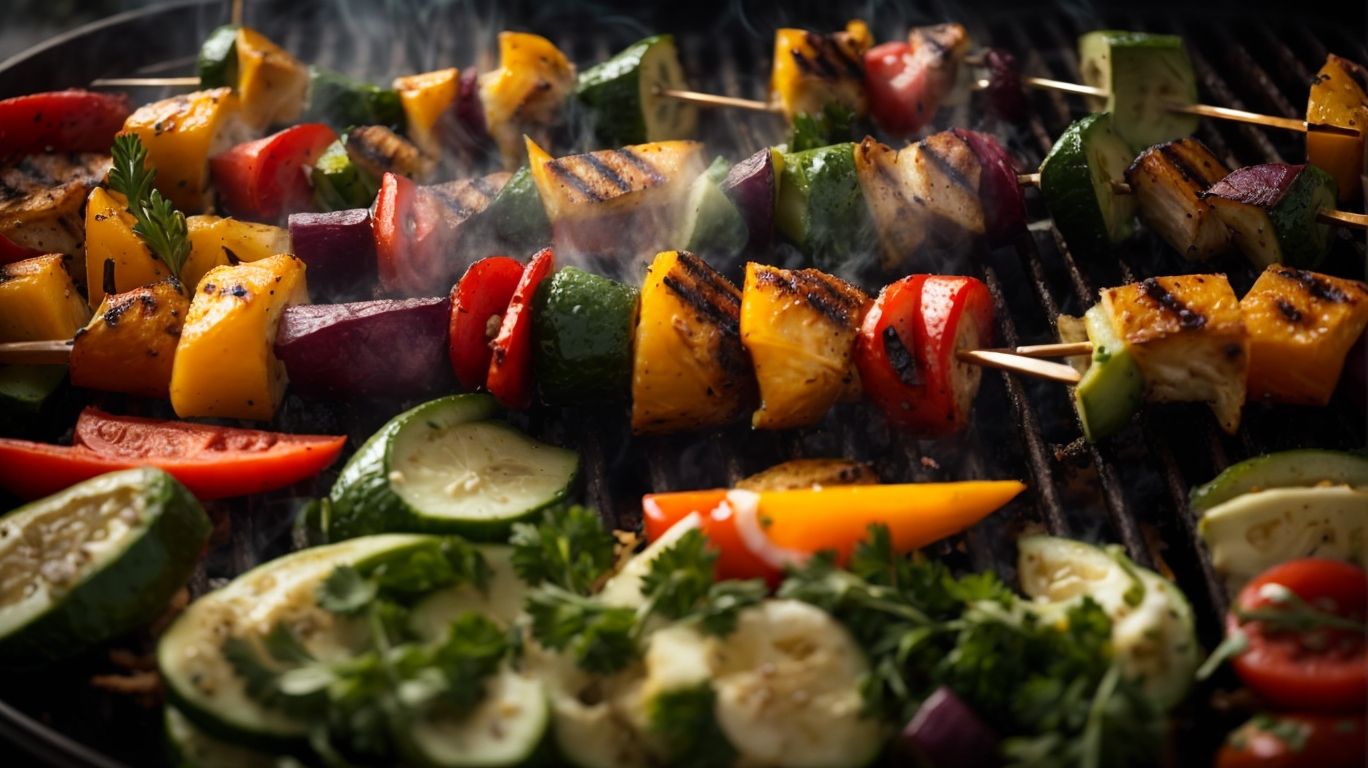
Credits: Poormet.Com – Austin Torres
Vegetable kabobs offer a delicious and versatile culinary experience, blending fresh ingredients, flavorful marinades, and grilling techniques to create a nutritious and visually appealing dish that caters to a wide range of tastes and preferences.
Vegetable kabobs are a delightful way to incorporate an array of colorful veggies into your diet, providing a spectrum of nutrients essential for overall well-being. Whether you prefer bell peppers, zucchini, cherry tomatoes, onions, or mushrooms, these skewered delights can be customized to suit your taste buds.
Preparing vegetable kabobs is a straightforward process that involves cutting the veggies into uniform pieces, marinating them in a flavorful mixture, and then threading them onto skewers for easy grilling.
Not only are vegetable kabobs a feast for the eyes, but they are also a nutritious addition to your diet, offering a healthy boost of fiber, vitamins, and antioxidants.
Frequently Asked Questions
How to Cook Vegetable Kabobs on the Grill?
Cooking vegetable kabobs on the grill is a delicious and healthy way to enjoy your favorite vegetables. Here are some frequently asked questions about how to cook them:
1. What vegetables are best for making kabobs?
You can use a variety of vegetables for your kabobs, but some popular options include bell peppers, onions, mushrooms, zucchini, and cherry tomatoes. It’s best to choose vegetables that are firm and can withstand grilling without falling apart.
2. Do I need to soak the skewers before grilling?
If you are using wooden skewers, it’s recommended to soak them in water for at least 30 minutes before grilling to prevent them from burning. Metal skewers do not require soaking.
3. How do I prevent the vegetables from sticking to the grill?
To prevent sticking, make sure you lightly oil both the vegetables and the grill grates before cooking. You can also use a grill basket or foil to keep the vegetables from falling through the grates.
4. How long does it take to cook vegetable kabobs on the grill?
Cooking times will vary depending on the type of vegetables and the heat of your grill. Generally, it takes about 10-15 minutes for the vegetables to become tender and slightly charred. Make sure to rotate the skewers every few minutes for even cooking.
5. Can I add meat to my vegetable kabobs?
Absolutely! You can add chunks of chicken, shrimp, or steak to your vegetable kabobs for a complete meal. Just make sure to adjust the cooking time accordingly to ensure the meat is fully cooked.
6. What are some ways to season vegetable kabobs?
You can season your vegetable kabobs with a variety of herbs and spices, such as garlic, thyme, rosemary, or cumin. You can also add a marinade or brush on some barbecue sauce for extra flavor. Get creative and experiment with different combinations!

